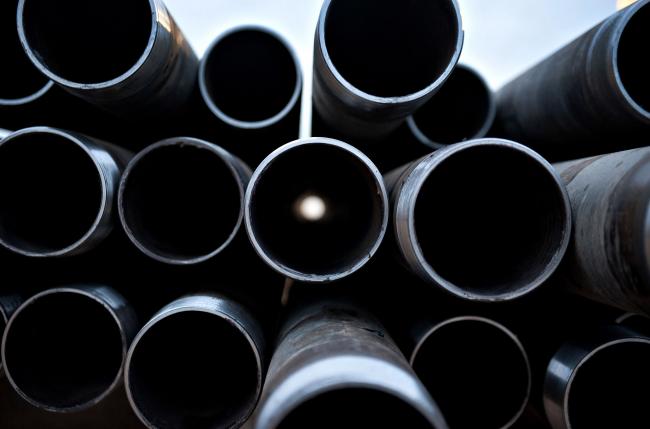(Bloomberg) -- The Keystone crude pipeline was shut Wednesday after leaking thousands of barrels of crude in North Dakota, the third spill along the pipeline’s route in less than three years.
TC Energy Corp.’s 590,000 barrel-a-day pipeline that carries crude from Alberta to refineries in the U.S. Midwest and Gulf Coast ruptured October 29 near the city of Edinburg in North Dakota, said Brent Nelson, an emergency manager for Walsh County. About 9,120 barrels were released, some of which impacted a wetland, according to the state’s Department of Environmental Quality.
TC Energy declared force majeure on the pipeline system after the shutdown, according to people familiar with the matter. An emergency response team has contained the impacted area, and the system is shut from Hardisty, Alberta to Cushing, Oklahoma and to Wood River/Patoka, Illinois, the company said in a statement. TC Energy also reduced rates on the Marketlink pipeline, an extension of Keystone that runs from Cushing to Port Arthur, Texas, according to people familiar with the matter.
The shutdown stands to affect U.S. Gulf Coast refiners seeking alternative heavy crude supplies amid sanctions on Venezuela, lagging output from Mexico and OPEC production cuts. At the same time, Alberta’s oil producers are struggling to cope with production limits imposed earlier this year when too much oil encountered too few pipelines, causing prices to collapse.
Heavy Western Canadian Select crude’s discount to West Texas Intermediate futures widened $19 a barrel Thursday, the widest since December, data compiled by Bloomberg show. After the Keystone spill in South Dakota in 2017, the discount widened from about $11 a barrel to more than $25 a barrel. In the Gulf Coast, heavy Canadian crude was about $1.50 a barrel stronger than before the spill, according to market participants.
Gulf Coast refiners could seek medium-grades of sour crude to replace the heavy Canadian barrels, Kevin Birn, IHS Markit’s director of North American crude oil markets, said by telephone. “You could see refiners pivot to alternative sources of supply,” he said. “There will be some flexibility in the system to address this.”
The spill, estimated to be 1,500 feet in length by 15 feet wide, comes as TC Energy seeks to build the controversial Keystone XL pipeline. The company said Keystone was probably the source of a spill in Missouri in February that shut a segment of the line. In 2017, a spill in South Dakota reduced rates on the line for months, causing Canadian oil prices to collapse.
The long-delayed Keystone XL oil pipeline has been on the drawing board for a decade. The 1,200-mile (1,900-kilometer) pipeline would help carry 830,000 more barrels of crude a day from Alberta’s oil sands to U.S. Gulf Coast refineries. The project has been a top target of environmentalists, who argue that the pipeline would contribute to catastrophic climate change.
No new export pipelines out of Canada are planned until late next year at the earliest, when Enbridge Inc.’s Line 3 is scheduled to start operation. Two other pipeline projects including the government-owned Trans Mountain line to Vancouver area as well as the proposed Keystone XL have faced regulatory and legal delays in addition to fierce opposition from environmental groups and landowners.
(Adds Marketlink slowdown in third paragraph, analyst comment in sixth)
